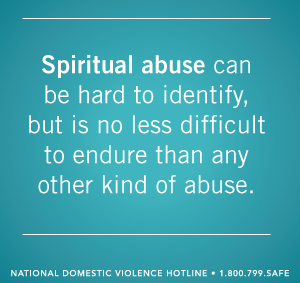By Janet Fife

Recently I wrote about schools of deliverance ministry popular in charismatic
circles during the second half of the 20th century – ministries of which I had
personal experience. More recently another school of inner healing and
deliverance has become popular, and of this I have no direct experience.
Bethel Sozo (so called in the UK to distinguish it from the older Sozo
Ministries International, run by Marion Daniel) comes from Bethel Church in
Redding, California. It was founded by Dawna De Silva, who with her co-
leader Teresa Liebscher writes much of the literature.
One obvious difference between Bethel Sozo (BS) and most earlier schools
of deliverance ministry is its organisation. Previously deliverance was often
offered at a retreat centre such as Ellel; by itinerant missioners like Marion
Daniel or Eric Delve; or in parishes such as St. Aldate’s, Oxford and St.
Michael-le-Belfrey, York. Some clergy, like Michael Green, carried out
deliverance both in their own parish and while travelling. At churches like the
Belfrey a number of people (including myself) were trained in Wimber’s
methods of power healing and deliverance, and both staff and congregation
were strongly encouraged to attend Wimber conferences on his UK visits.
Later in the 1990s Wimber’s organisation began to establish a number of
Vineyard churches in the UK where his methods were used.
BS has no retreat centres or churches of its own, but there are Sozo teams
based in other churches. Most of these belong to networks such as New
Wine and the Vineyard, but a number of others to established denominations
such as the Church of England, the Church of Scotland, and the Baptist
Union. A map on the BS UK website will guide you to your nearest ‘Sozo
Church’ or ‘Sozo Resource Church’. The National Facilitator of BS UK is an
LLM (licensed Lay Minister) in Rochester Diocese; she is on the Council of
Reference too. The C of R also includes a London associate vicar and a
(former?) Norfolk churchwarden who volunteers at Holy Trinity Brompton’s
Healing Room. Teresa Liebscher is a Trustee.
Sozo is described as ‘a gentler form of deliverance’ and differs in several
respects from the older methods. Practitioners like Michael and Rosemary
Green, Ellel, and Wimber made a clear distinction between healing and
deliverance ministry. The latter involved routing demons, whether they were
oppressing or possessing a person. Healing, on the other hand, was usually
physical or emotional and did not involve confrontations with evil spirits.
Some practiced ‘healing of the memories’ but again this was usually
differentiated from deliverance. Often ministry to a client would progress to deliverance only after healing had been attempted, or if what were considered
clear signs of demonic presence were detected.
With BS that distinction is blurred. Healing and deliverance are seen as much
the same thing, and when a ‘spirit’ is referred to it’s often unclear whether a
human attitude or supernatural entity is meant. In Sozo: Saved, Healed,
Delivered an ‘orphan spirit’ seems to be considered a demon, but is defined
in the glossary at the end of the book as an established attitude. In the same
book a ‘stronghold’ is variously described as ‘demonic’ and ‘a mindset’.
This vagueness is characteristic of much of the BS I’ve researched. It might
be considered a positive; in classic spirituality the devil is often seen as
working through human weaknesses and temptations. In reading BS
literature I was occasionally reminded of C.S. Lewis’ portrayal of devilish
strategies in Screwtape Proposes a Toast. Unlike Lewis, however, de Silva
and Liebscher seem unable to distinguish between a metaphor and a fact.
When a literal belief that a client is oppressed by demons (and BS considers
that most of us suffer demonic oppression) combines with an unclear
message about whether a particular aspect of the client is demonic or natural,
the resulting confusion could be unhelpful. Is this a habit I need to change,
which requires self-discipline, or was it the influence of an evil spirit I’ve just
been delivered from – in which case I can just relax?
The BS approach is more subtle than that of, for example, Ellel, but they still
see demonic influence as pervasive. They inhabit a universe in which a
demon might appear in the corner of your living room, or repeatedly come to
your bedside to harass you – and in which it’s OK to order the demon to ‘go
bother’ your colleague instead.
This preoccupation – some might call it an obsession – with supernatural
phenomena is typical of Bethel Church. It’s a charismatic megachurch with a
heavy emphasis on miracles, and teaching a version of the prosperity gospel.
Bethel’s School of Supernatural Ministry (BSSM) is known for practices such
as ‘grave soaking’ (aka ‘grave sucking’), in which adherents visit the grave of
a holy person or gifted healer to absorb their ‘anointing’. BSSM is a 1-3 year
course, which boasts 13,000 graduates from 100 countries. In 2017 It was
reported to earn about $7 million – a mere 20% of the church’s income. There
is now a branch in London.
When the massive Carr Fire threatened Redding in August 2018, Pastor Bill
Johnson and other Bethel leaders prophesied rain and commanded the wind
to shift. In the event the church campus and most of the town were saved, but
1,564 buildings were destroyed, 121,000 acres burnt, and 6 people killed. 25
of the 800 Bethel staff lost their homes and possessions.
Bethel teaches that people can be raised from the dead. The Dead Raising
Team claim their 60 teams worldwide have resurrected 15 people, according
to a report in Newsweek of 12 Dec. 2019. The DRT has its own Facebook
group, and a website via which you can request their ministry. As the
Newsweek article appeared, the church were praying that a 2 year old girl be
raised from the dead, and ‘declaring life over her’ (Bethel prayers often come
in the form of commands). Only after 6 days did funeral preparations begin.
The child’s parents had believed she would come back to life – their anguish
doesn’t bear thinking of.
In Shifting Atmospheres Dawna De Silva writes of her neighbours’ lawns
being dead after a 3-year drought, and of ‘declaring life into the
neighbourhood…this lawn will be watered.’ She takes credit for her
neighbour ‘lavishly’ watering his lawn the same evening, and for ‘the spiritual
atmosphere of dryness’ shifting. She doesn’t consider the environmental
impact of using scarce water supplies on suburban lawns.
The teachings of De Silva and Liebscher reflect those of Bethel Redding: that
because of Jesus’ victory on the cross we have a right to health and
prosperity. All we have to do is ‘live in the victory’ and banish those spirits that prevent us from doing so. The question is: do our clergy and bishops
realise what they are harbouring in some of our churches? And, in view of
Bethel’s expansionist plans and increasing popularity, are they prepared for more churches to become ‘Sozo churches’.







